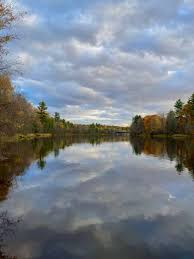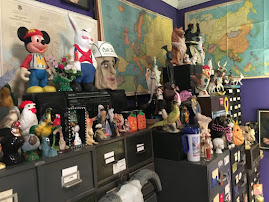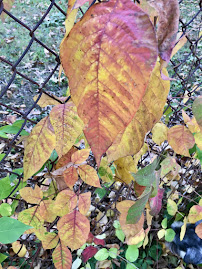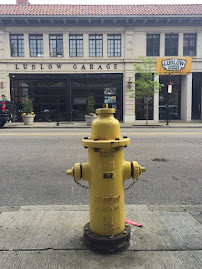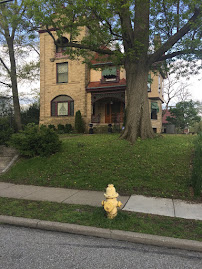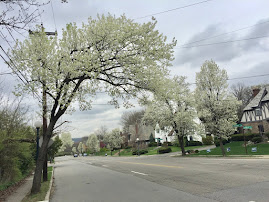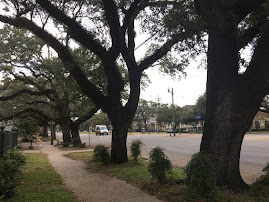Dear George,
Oppenheimer won Best Picture at the Academy Awards so we finally got around to watching it. It covered arguably the most significant events of our lifetimes: Hiroshima and Nagasaki, the Cold War with Russia, the nuclear arms race, the threat of annihilation -- an era of great tension and fear. And lots of personal memories.
I was just about to enter fourth grade when the U.S. dropped its atomic bombs on Japan in August, 1945. At school our Weekly Reader contained regular articles on the peacetime benefits of atomic energy, but we children were more concerned that humankind now possessed the capacity to destroy all life on the planet. A difficult prospect for young minds to digest. We had regular classroom rehearsals in preparation for nuclear war. This consisted mainly of bending over and putting our heads under our wooden desks.
Russia exploded its first atomic bomb in August 1949. The Cold War was in full sway, and the possibility of nuclear war seemed increasingly real. The hysteria gripping the nation spread as well to my home town of Menominee in Michigan’s Upper Peninsula. Menominee was located 150 miles east of the Soo Locks, the latter likely to be a prime target of Russian bombers because of their economic importance to the nation. Local prognosticators reasoned that if enemy bombers drifted off course by as little as a single degree they would pass directly over Menominee. Our town, with its location on the Menominee River and its adjoining port, factories, and warehouses could easily be mistaken for the Soo, resulting in the accidental delivery of atomic bombs. Local anxiety about a possible atomic attack remained at a fever pitch throughout my teenage years.
Whether or not my father, my uncle Ralph, and my grandfather, V.A. Sr., believed in the Soo Locks theory, they decided that it would be prudent to build an atomic bomb shelter in the basement of my grandfather’s drugstore. V.A. enjoyed carpentry projects of various sorts and took charge of construction, recruiting me as his assistant. The bomb shelter was in a room the size of a small bedroom along the south wall of the drugstore basement, a cramped space for the eleven members of our two families. I forget the exact materials, but we lined the walls with some sort of insulation to protect us from radioactive fallout. Then we stocked the room with bottles of water, candles, canned food items, toilet paper, fresh underwear, and other essentials. The adults had an ongoing debate about whether to stock the bomb shelter with guns in case neighbors tried to break in. We settled for multiple interior locks on the door.
I left for college in 1955 and my second coop job was in New York City two years later. New Yorkers assumed, probably correctly, that their city would be the number one target for a nuclear attack by the Russians, and I was nervous about moving there. By this time the U.S. and Russia had both developed hydrogen bombs, each about 700 times more powerful than the Hiroshima bomb. I vividly remember attending the Barnum & Bailey Circus in Madison Square Garden one Saturday afternoon. Suddenly the entire interior of the arena went black, search lights began flashing on and off, and sirens wailed at full blast. I nearly collapsed from anxiety, fully convinced with the rest of the audience that the end had arrived. Then a bevy of clowns came charging out, tooting their horns, and we breathed a sigh of relief. Just another amusing circus joke.
In 1960 my brand new bride Katja and I moved to Ann Arbor for graduate school, and we voted for JFK in our first presidential election. Two years later President Kennedy delivered a TV address to the nation, announcing that the Soviet Union had built nuclear missile bases in Cuba and was delivering nuclear warheads by sea. Kennedy had ordered U.S. naval ships to blockade Cuba. Khrushchev responded that the blockade was “an act of aggression propelling humankind into the abyss of a world nuclear-missile war.” A military confrontation seemed imminent. Katja and I met on campus to decide what to do. Detroit, one of the nation’s most important industrial centers, was a mere 40 miles away, and Ann Arbor seemed a likely candidate for deadly radioactive fallout. We thought about leaving immediately for my parents’ Upper Peninsula home, a 400-mile trip. However, Soo Lock fears were still fresh in my mind. and we had the terrible feeling that no place was safe. Fortunately the crisis finally ended thirteen days later. Historians today agree that the world was actually on the brink. That was my last personal nuclear crisis, even though, in fact, the potential for nuclear disaster has probably increased with rogue states like Pakistan and North Korea possessing the bomb. But we have survived for almost 80 years, and I think we’ve become desensitized. Oppenheimer did bring it all up again.
Love,
Dave

















